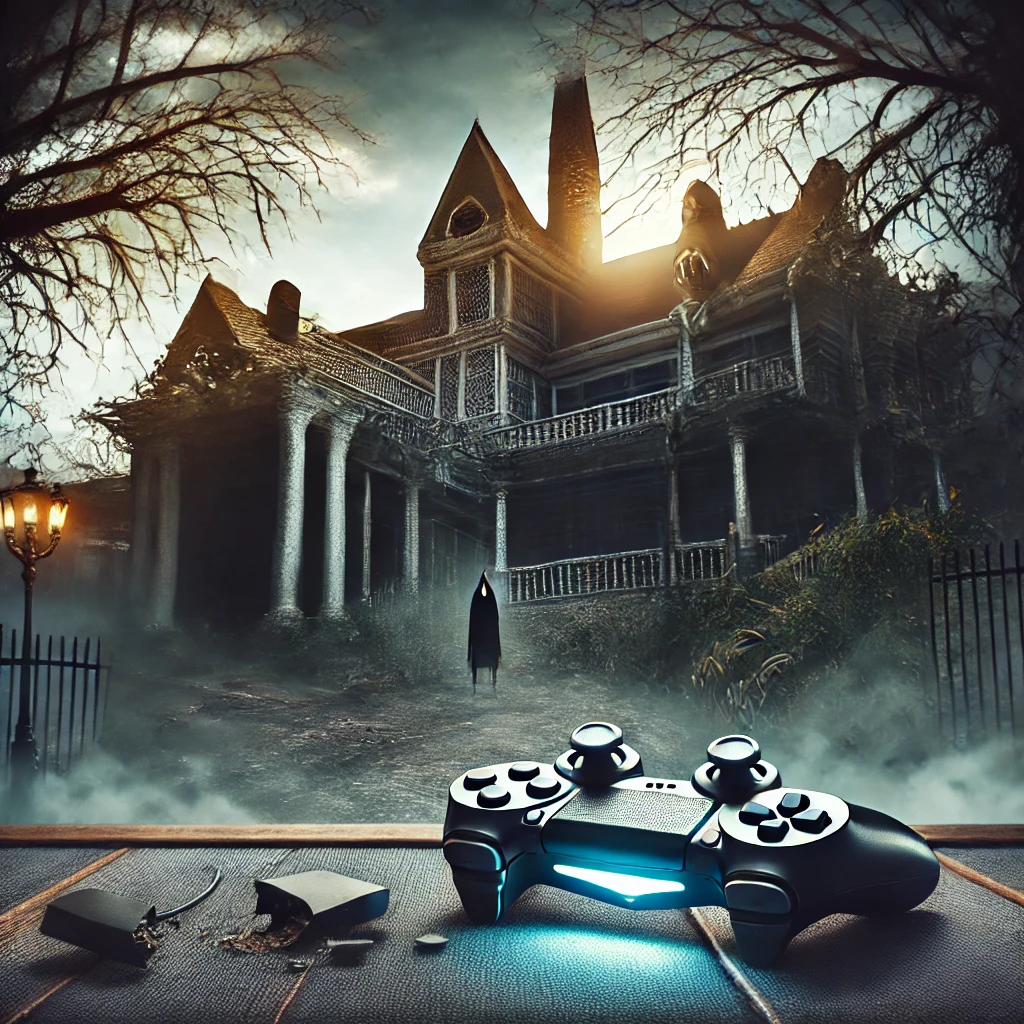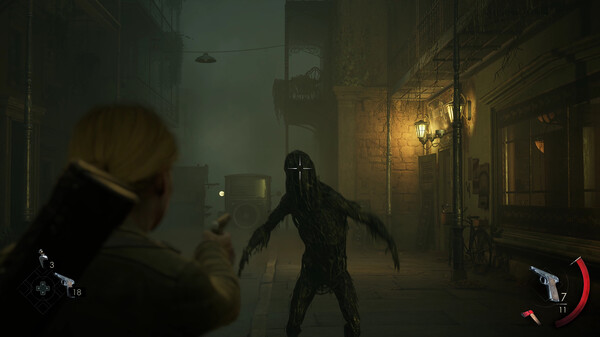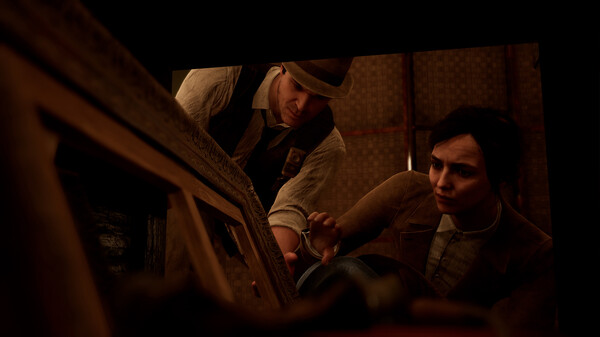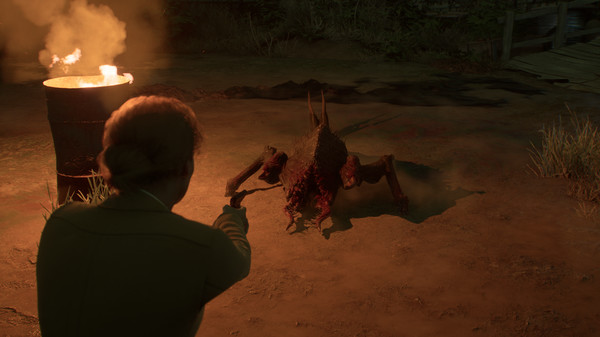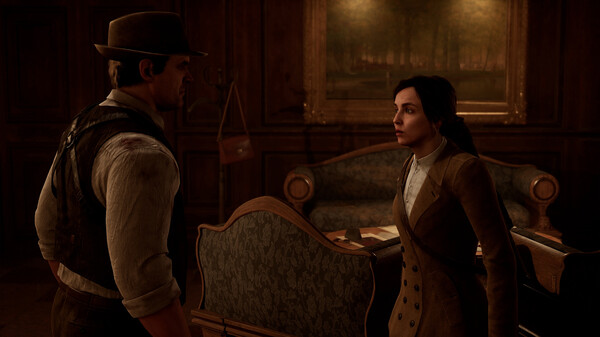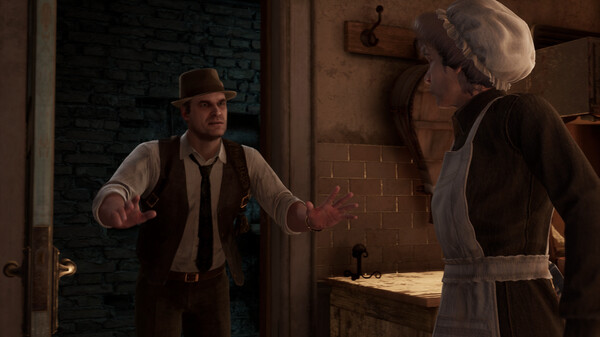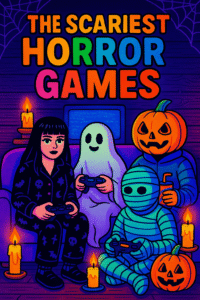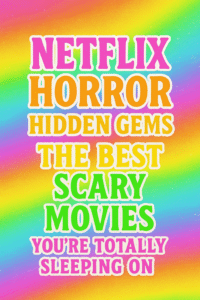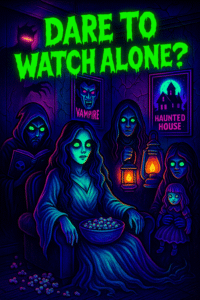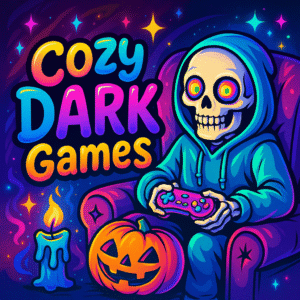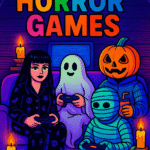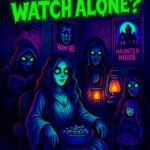This post is all about Alone In The Dark and my questioning of wth I just witnessed, and to help you decide if you should move forward with experiencing it yourself.
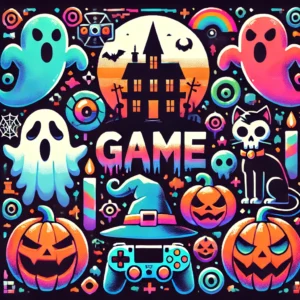
This post may contain affiliate links, which means I’ll receive a commission if you purchase through my links, at no extra cost to you. Please read https://bookedandbewitched.com/disclaimer/” full disclosure for more information
There’s nothing quite like firing up your shiny, new PS5, sitting back, and immersing yourself in the cutting-edge world of gaming. I had big dreams for my first game on the new console. Maybe I should’ve picked something safer—like Alan Wake 2, which was literally sitting there begging me to play it. But no, I chose Alone in the Dark (2023). And the existential question that arose from that experience? Why? Why did I do this to myself?
Now, I know what you’re thinking. “This is a remake of a beloved classic! It must be worth your time!” Hold onto your controller, because we’re about to dive deep into the bizarre chaos that is Alone in the Dark. Let’s just say this: the game tried. Did it succeed? Well… about as much as trying to teleport without superpowers.
Before we delve into my absolute delight (sarcasm intended) with this game, let’s talk a bit about the genre it falls into. Alone in the Dark comes from a proud tradition of Lovecraftian horror games. If you’re unfamiliar with that term, buckle up, because understanding this may help you forgive some of the weird, confusing things this game tries to do.
And if you need more horror-themed entertainment choices. Go check out-
🧟♀️🎮25 Nintendo Switch Horror Games🧟♀️🎮
🫠🧟♂️25 Tim Burton Style Videogames For Your Playing Pleasure🫠🧟♂️
🔪👠21 Smutty Dark Romance Book Series To Devour Immediately🔪👠
Alone In The Dark
Alone in the Dark (2023): Why Did I Play This Again?
What Are Lovecraftian Horror Games?
You’ve probably heard the term “Lovecraftian” thrown around in horror circles, but what does it really mean? Essentially, it refers to the style of horror created by author H.P. Lovecraft, whose stories dealt with themes of cosmic dread, unknowable horrors, and humanity’s utter insignificance in the grand scheme of the universe. You know, real fun stuff.
In Lovecraftian games, you can expect a few things:
1. Confusing, layered plotlines that make you feel like your brain is melting.
2. Ancient gods or monsters that defy logic or explanation.
3. Madness and paranoia, because what’s more fun than slowly losing your grip on reality?
4. A sense of helplessness, where no matter how hard you try, you’re still a tiny speck in the face of unfathomable evil.
These games revel in their ability to disorient you. You won’t always understand what’s going on, but you’ll feel unsettled, small, and a little freaked out. The best Lovecraftian games use these tropes to immerse you in a unique, creepy experience.
Unfortunately, Alone in the Dark cranks these elements up to eleven—and not always in a good way.
The Start of the Nightmare: Collectibles and Glitches
The game wasted no time telling me I’d need to play it at least twice to gather all the collectibles and understand the lore. Um, excuse me? I just got here. The first red flag of a game that’s trying too hard is when they tell you upfront that you’ll need to commit to multiple playthroughs. It’s like the game was saying, “Yeah, we made it confusing on purpose. Now go figure it out.”
From the get-go, the game dumps piles of lore and world-building onto your lap like it’s feeding pigeons. But instead of feeling intrigued by the mystery, I felt overwhelmed. Do you ever play a game and think, Wow, they definitely forgot what the main goal was here and got lost in side quests? That’s Alone in the Dark 2023.
Sure, the house looks amazing. The various landscapes we traverse—stunning. The music? Creepy and atmospheric. And hey, I even loved the voice acting for every random piece of lore I picked up. It almost made me want to dive deeper into the madness. Almost.
But that’s where the compliments end. Because now, we need to talk about the combat. Oh boy. Turn your camera sensitivity all the way up, people, because your character moves like they’ve been submerged in molasses. Ever wanted to experience a fight scene where you turn around as fast as a sloth duct-taped to the floor? Yeah, you’ll love this.
And let’s not even start on the glitches. Actually, we should. Several times I had to close out the game and restart just to escape a glitch that made it impossible to move. Imagine getting stuck between air and an enemy, unable to fight, run, or do anything except contemplate life’s choices. Every time this happened, I was ready to hurl my controller across the room.
Combat: A Fight for My Sanity
Combat in Alone in the Dark is like trying to play whack-a-mole, except the moles teleport directly on top of you while you’re reloading your weapon at the speed of a snail. I’m not a hardcore FPS gamer, but I survived Resident Evil: Biohazard and Village just fine. So, I thought, “I’ve got this.”
Ha. Wrong.
The enemies in this game have mastered the art of cheating. You run away, thinking you’ve got a breather, but nope! They teleport right next to you, all while you’re stuck reloading a weapon that might as well be a musket from the 1700s. If you somehow manage to get away, good luck aiming—because the controls seem possessed. It’s like your character’s arms are made of wet noodles. By the time you’ve finished fumbling, your health is down to zero, and your patience is even lower.
Why do I turn with the speed of a glacier? Why does reloading feel like I’m writing a novel in real-time? And why does every encounter make me question my life choices? These are the questions that plagued my mind during combat. But let’s move on to the real problem: the plot.
The Plot: Lovecraftian Overload or Confusing Fever Dream?
Look, I love a good mind-bending plot. I’m all for layers of lore, backstory, and world-building that leave you thinking, “Whoa, what did I just experience?” But Alone in the Dark crams about twelve games’ worth of information into a single ten-hour playthrough. The result? A chaotic fever dream that left me more confused than intrigued.
Let me break it down for you: the game throws in lunatic asylums, pirates, voodoo, cults, ancient Egyptians, oil barons, mental health facilities, the Spanish flu, World War trauma, time travel, horror writers, and—wait for it—tree goddesses that devour children. That’s right. Tree. Goddesses.
At some point, you have to ask yourself, “Did they just throw a bunch of horror tropes into a blender and hit ‘puree’?” Because that’s what it feels like. You’re being dragged through all these insane concepts with no time to process any of it. I still have no idea what the deal was with Jeremy, the Arctic, or how Elizabeth ties into all this. Did I miss something? Probably. But after a while, you just stop trying to understand and let the weirdness wash over you.
In fact, the game’s entire approach to storytelling feels like it’s gaslighting you. It’s constantly feeding you cryptic tidbits, and when you ask, “Wait, what does this mean?” the game just shrugs and says, “You’ll figure it out. Maybe.” It’s like trying to have a deep conversation with someone who’s already three steps ahead in a chess match you didn’t even realize you were playing.
The House: A Lovecraftian Dream (At Least Visually)
Now, let’s talk about one of the few redeeming qualities: the environment. The house in Alone in the Dark is a masterpiece of creepy, Lovecraftian design. It’s sprawling, gothic, and full of unnerving atmosphere. I actually found myself enjoying just looking at the house—its haunted plantation vibes were spot-on. Every corner felt like it was hiding some ancient horror, and in a better game, I would’ve loved to explore it.
The same goes for the landscapes. The bayou, the old asylum, the eerie wilderness—all of it was visually stunning. It’s clear that the design team put a lot of love into these environments, and I appreciated that. If only the gameplay could’ve matched the visual splendor.
Unfortunately, no matter how great a game looks, it’s hard to enjoy the scenery when you’re battling a glitchy mess of controls and a plot that feels like a fever dream.
A Missed Opportunity
What frustrates me the most about Alone in the Dark is that there’s a genuinely good game hidden somewhere in here. If they had focused on just one of the cool ideas—like the ancient tree goddesses, or the asylum, or the voodoo, or literally anything—and developed it fully, this could’ve been an amazing experience. Instead, it feels like the game tried to be everything all at once, and as a result, it’s a jumbled mess.
There’s so much lore here that could’ve been explored in greater depth. They had all the ingredients for a killer Lovecraftian horror game, but they tossed them all into the same pot, and now nothing stands out. It’s like they couldn’t decide which horror trope to focus on, so they just used all of them.
And while I understand that this is a remake of a beloved classic, the execution leaves a lot to be desired. Nostalgia can only carry a game so far, and after almost a year on the market, Alone in the Dark still feels like it’s not worth the full $60 price tag. Wait for a sale. Or better yet, maybe just play Alan Wake 2.
Final Thoughts: Alone in My Regret
In the end, Alone in the Dark (2023) left me feeling more frustrated than scared. The potential was there, but the execution was lacking in almost every department. From the sluggish combat to the overwhelming (and underdeveloped) plot, it’s hard to recommend this game in its current state.
If you’re a die-hard fan of the original or if you enjoy untangling messy, convoluted stories, you might find some enjoyment here. The atmosphere is undeniably creepy, and the visuals are impressive. But for the average gamer, this feels more like a chore than a thrill.
And so, my journey into the dark ends—not with a scream, but with a sigh of disappointment. My advice? Stick to Alan Wake 2, where the horror is at least cohesive, and your character can turn faster than a sloth on glue.

This website is a participant in, an affiliate advertising program designed to provide a means for sites to earn advertising fees by advertising and linking to multiple .com sites. Visit our legal page for full details.
